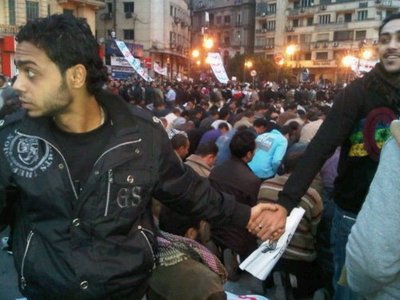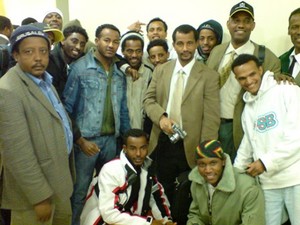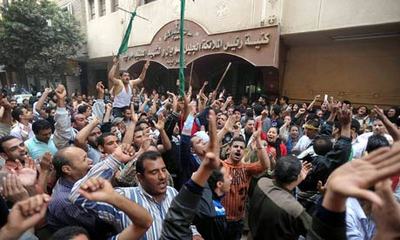 Provocateurs are being blamed for a deadly mob attack on a suburban Cairo church and ancient monastery — and riots that have followed.
Provocateurs are being blamed for a deadly mob attack on a suburban Cairo church and ancient monastery — and riots that have followed.
A number of Egyptians on March 10 pointed the finger at Egypt’s army for the death of 13 people killed as Coptic Christians protested the church burning. However, others blamed radicals.
The Copts consider themselves to be the original Egyptians. They point out that Christianity was the majority religion in Egypt from the fourth century until the Muslim conquest in 641 A.D. Today Egypt is predominantly Sunni Muslim. Coptic Christians comprise 9 percent of the population and other Christians about 1 percent.
During Egypt’s current transition in government, there are fears that radicals will provoke violence and amid the chaos, seize control.
The March 9 riots left about 140 injured after more than 1,000 Copts gathered in the neighborhood of Manshiyet Nasr to protest against the burning of the suburban Church of the Two Martyrs and an adjoining Coptic monastery.
Crowds of Muslims also gathered and violence erupted with homes and businesses torched and the Egyptian military firing shots into the crowds in a bid to control the riots.
A military expert and former soldier who asked not to be named told the Egyptian newspaper al-Masry al-Youm that it was likely the chaos was created by radicals with an agenda. Their motive, he said, was to create open conflict between Muslims and Christians.
“The army would never open fire on people like this. If these people have bullets that were actually from government-issued weapons, then they must have been stolen,” he told al-Masry al-Youm.
“I just came back from the funeral of a man I saw shot dead by the army,” Samy Roushdy, a Coptic resident at the protest, told the German news service Deutches Presse-Argentur. “I don’t understand why the army would come in and fire like this. We could see them firing at us.”
Roushdy said an army general attended the funeral and apologized for the violence, vowing investigations were underway. However, angry Christians shouted the general down, protested his presence at the funeral and forced him to leave.
In another incident, the Egyptian newspaper al-Masry al-Youm, reported that 27-year-old Samaan Nazmy, a Coptic Christian, was shot in the heart and killed on his way home from work on March 8.
“He was definitely shot with government-issued bullets,” his brother told the newspaper.
Citing the army’s role in restoring peace to Egypt’s streets after protests forcing President Hosni Mubarak to resign, some blamed Egypt’s controversial State Security.
During a popular evening Egyptian television program on the satellite channel Dream2, a caller said that the way in which the church was burned could only have been carried out by someone who knew what they were doing.
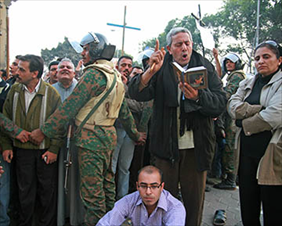 The allegations come after widespread reports suggested that during the anti-government protests, a number of security officers torched police stations and stole weapons in a bid to create chaos and strike fear among people calling for reform. Egypt’s attorney general has charged 15 people with illegal possession of weapons and destruction of private and public property.
The allegations come after widespread reports suggested that during the anti-government protests, a number of security officers torched police stations and stole weapons in a bid to create chaos and strike fear among people calling for reform. Egypt’s attorney general has charged 15 people with illegal possession of weapons and destruction of private and public property.
Pope Shenouda, the patriarch of the Coptic Christian church, has requested an investigation into the events, according to Matta Sawiris, a member of the council of Coptic Orthodox Churches.
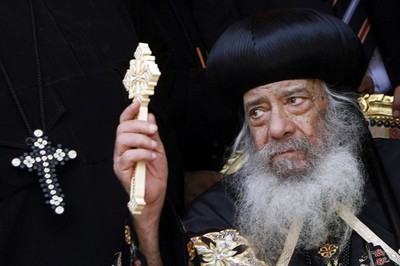 Egypt‘s cabinet March 9 drafted a law criminalizing thuggery and intimidation of civilians. It includes a provision allowing the death penalty if such crimes result in deaths.
Egypt‘s cabinet March 9 drafted a law criminalizing thuggery and intimidation of civilians. It includes a provision allowing the death penalty if such crimes result in deaths.
According to Father Abram Fahmy of St. Simon the Tanner Monastery in Mokatam Hills, the church was burned to the ground and the congregation’s pastor narrowly escaped with his life.
The attack came after a radical local imam – a Muslim leader – issued a call to the neighborhood to “Kill all the Christians,” according to Compass Direct International, a watchdog group which reports on persecution of Christians.
The attack on the church started the evening of March 4 in the village of Sool, part of the Cairo suburb of Helwan, and lasted through most of Saturday. A local imam, Sheik Ahmed Abu Al-Dahab, reportedly issued the call during Friday afternoon prayers, telling area Muslims to kill the Christians because they had “no right” to live in the village. The attack started several hours later.
The church’s pastor, Rev. Hoshea Abd al-Missieh, narrowly escaped death in the fire.
“I was in the attack, but I can’t describe it,” he told Compass Direct. “The sound of the church being destroyed that I heard – I can’t describe it, how horrible it was.”
According to villagers, the mob broke into the Church of the Two Martyrs St. George and St. Mina.
As they chanted “Allahu Akbar [God is great],” they looted the building, demolished the walls with sledgehammers and set a fire that burned itself out the next morning.
Looters removed anything valuable, including several sacred vessels holding the remains of venerated Copts – most of whom were killed in other waves of persecution,
The vandals stomped and kicked the vessels like soccer balls, witnesses said.
After the fire went out, the mob tore down what little remained of the church structure. The group of Muslims then held prayers at the site and began collecting money to build a mosque where the church building once stood, said the assistant bishop of Giza, the Rev. Balamoun Youaqeem.
“They destroyed the church completely,” he said. “All that was left is a few columns and things like that. As a building, it’s all gone.”
During the fire, Pastor al-Missieh was trapped in a house near the church building that was filling up with smoke. He faced a difficult dilemma – choke or burn to death in the house, or face an angry mob of thousands screaming for blood.
“When the smoke was too much, I told myself, ‘I am dying anyway,’ so I decided I would go out and whatever happened, happened,” Al-Missieh told Campus Direct.
When he went outside, a man with a rifle told the priest to follow him. At first Al-Missieh was reluctant, he said, but the man fired off two rounds from the rifle and told the crowd to step away.
“No one will touch this man, he is with me,” the priest remembered the man yelling at the mob. Al-Missieh was taken to a house where he met three other workers who were at the church when it was attacked. The men all relayed stories similar to the priest’s.
On March 6, roughly 2,000 people gathered outside the Radio and Television Building in Cairo to protest the attack and what Copts cited as long-standing government refusal to address the persecution of Christians in Egypt.
Protestors also accused the government of not sending enough troops to the village to control the situation. Holding up crosses and signs, the protestors shouted the name of Jesus and chanted, “We need our church.”
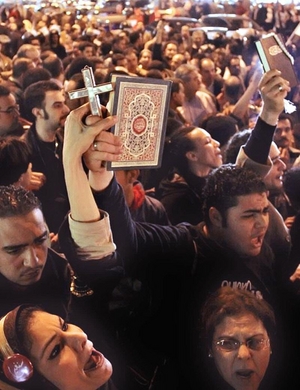 Soldiers armed with AK-47s with fixed-sheathed bayonets held the crowd back from the building as several priests took turns addressing the crowd. When the Giza parish priest, Bishop Anba Theodosius, said the army had pledged to rebuild the church but would not give a written guarantee of the promise, the crowd became enraged and pushed through the line of soldiers.
Soldiers armed with AK-47s with fixed-sheathed bayonets held the crowd back from the building as several priests took turns addressing the crowd. When the Giza parish priest, Bishop Anba Theodosius, said the army had pledged to rebuild the church but would not give a written guarantee of the promise, the crowd became enraged and pushed through the line of soldiers.
Assistant Bishop Youaqeem said the attack has devastated and enraged the Coptic community, but he sees hope.
“As they say – ‘All things work to the good of those who love the Lord,'” he said.
